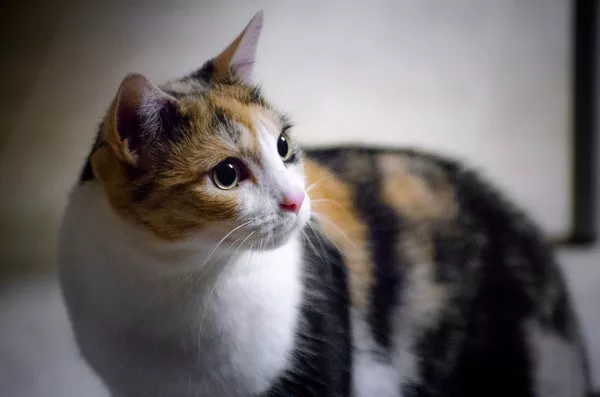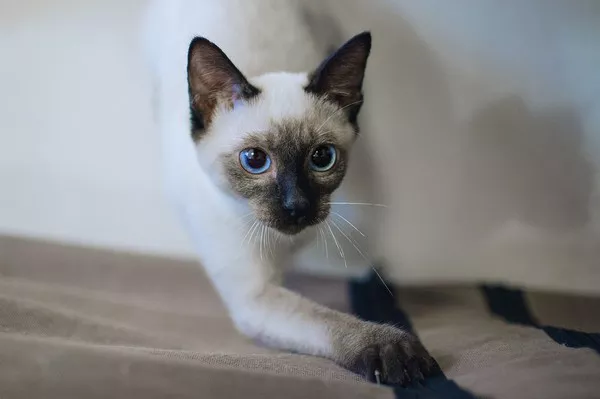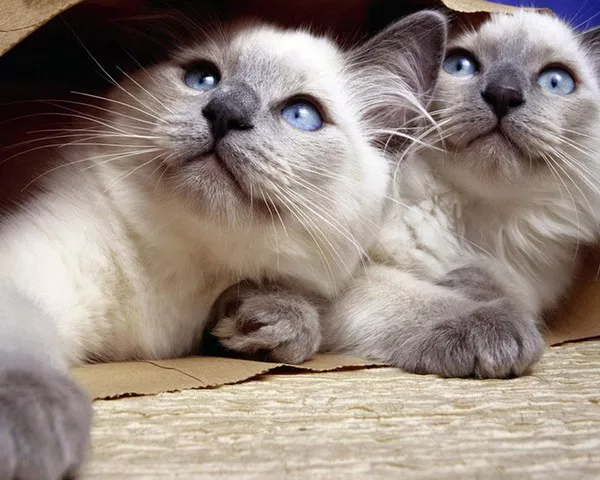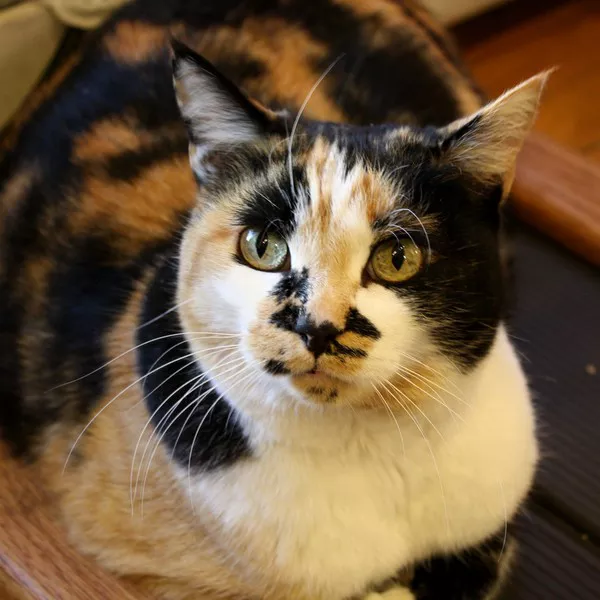Calico cats, with their distinctive tri-colored coats, have long been cherished for their enchanting beauty and captivating personalities. As these feline companions gracefully journey through the various stages of life, cat enthusiasts often wonder about the changes in their physical appearance, particularly the myth surrounding whether calico cats get fluffier with age. In this exploration, we delve into the intricate world of calico cats, examining the factors influencing their coat characteristics, dispelling myths, and uncovering the true nature of their evolving fluffiness.
The Myth of Fluffiness: A Purrplexing Tale
The notion that calico cats get fluffier with age has been a persistent myth circulating among cat lovers and enthusiasts. This belief may stem from observations of certain calico cats appearing to have a more voluminous and luxurious coat as they mature. However, the idea of inherent fluffiness with age requires a nuanced examination of various factors influencing a cat’s coat, including genetics, grooming habits, and overall health.
Understanding the Genetics of Calico Coats
To comprehend the potential changes in a calico cat‘s coat over time, it’s essential to explore the genetic foundation of their distinctive tri-colored patterns. Calico cats owe their striking coats to a combination of genes linked to coat color and pattern, primarily involving the X-chromosome.
1. X-Chromosome Inheritance:
The gene responsible for coat color is found on the X-chromosome. Female cats, which possess two X-chromosomes (XX), exhibit the unique tri-colored pattern associated with calico coats.
The color distribution in calico cats is a result of random X-chromosome inactivation during early development. This process leads to the expression of different colors in distinct patches on the cat’s coat.
2. Male Calico Cats:
Male calico cats are rare and typically the result of genetic anomalies, such as having an extra X-chromosome (XXY). These males may exhibit calico patterns but are often sterile due to the genetic imbalance.
The Influence of Genetics on Coat Characteristics
While the tri-colored pattern is a defining feature of calico cats, the overall fluffiness or length of their coat is influenced by a different set of genetic factors. The length, texture, and density of a cat’s fur are determined by genes related to coat type and are independent of the calico pattern.
1. Coat Length:
Calico cats, like any other cat breed, can have varying coat lengths. Some may have short hair, while others may boast long, luxurious fur.
The genes responsible for coat length are inherited independently of the genes that dictate coat color.
2. Coat Texture:
The texture of a calico cat’s coat, whether silky, soft, or dense, is also influenced by genetic factors.
Cats may inherit genes that contribute to a particular texture, resulting in variations among individual calico cats.
3. Density of Fur:
The density of a cat’s fur, referring to how closely the hair follicles are packed, is yet another aspect influenced by genetics.
Some calico cats may have a more densely packed coat, creating a fluffier appearance, while others may have a sleeker, less voluminous coat.
Factors Influencing Coat Changes with Age
As calico cats age, several factors contribute to potential changes in their coat characteristics. While genetics play a significant role, other environmental and health-related factors can influence the perceived fluffiness of a calico cat’s coat over time.
1. Nutrition and Health:
The overall health and well-being of a calico cat are paramount in maintaining a healthy coat. Adequate nutrition, a balanced diet, and regular veterinary care contribute to a cat’s overall vitality and coat condition.
Cats that receive optimal nutrition and healthcare are more likely to maintain a glossy, well-groomed coat as they age.
2. Grooming Habits:
Grooming practices significantly impact the appearance of a cat’s coat. Regular grooming, either through self-grooming or assistance from the cat owner, helps keep the coat clean, reduces shedding, and contributes to a healthier appearance.
Calico cats that engage in thorough self-grooming or receive consistent grooming assistance may maintain a more polished and less matted coat.
3. Seasonal Changes:
Seasonal variations can also influence a calico cat’s coat. Some cats experience changes in coat thickness or shedding in response to temperature fluctuations.
Calico cats living in regions with distinct seasons may exhibit variations in their coat characteristics throughout the year.
4. Hormonal Changes:
Hormonal fluctuations, such as those related to reproductive cycles, can impact a calico cat’s coat. Female cats may experience changes in coat density or texture during heat cycles or pregnancy.
Spaying or neutering can influence hormonal levels and, in some cases, contribute to coat changes.
5. Age-Related Changes:
As calico cats age, their coat may undergo subtle alterations. Just like humans, aging can affect the texture and appearance of hair.
Older calico cats may experience changes in coat color, texture, or density as part of the natural aging process.
Dispelling the Myth: Calico Cats and Fluffiness
While the myth that calico cats inherently get fluffier with age may be perpetuated by anecdotal observations, it’s crucial to recognize the multifaceted nature of coat characteristics. Not all calico cats will exhibit increased fluffiness as they age, and variations in coat length and texture are inherent in the diverse world of feline genetics.
1. Individual Variation:
Each calico cat is an individual with its own genetic makeup, contributing to unique variations in coat characteristics. Some calico cats may naturally have a fluffier coat, while others may maintain a sleeker appearance.
2. Genetic Diversity:
The genetic diversity within the calico cat population leads to a wide range of coat types. Some calico cats may have genes that promote a denser, fluffier coat, while others may possess genes for shorter or less voluminous fur.
3. Environmental Factors:
Environmental factors, including climate, grooming practices, and overall living conditions, can influence the perceived fluffiness of a calico cat’s coat.
Well-maintained grooming routines and a supportive environment contribute to healthier, more vibrant coats.
Caring for the Calico Coat: Tips for Cat Owners
Regardless of the specific coat characteristics of a calico cat, providing proper care ensures the cat’s overall well-being and enhances the appearance of its coat. Cat owners can implement the following tips to maintain a healthy and radiant calico coat:
1. Balanced Nutrition:
Offer a balanced and nutritious diet designed for the cat’s specific life stage and health requirements.
Consult with a veterinarian to determine the optimal diet and feeding schedule for the calico cat.
2. Regular Grooming:
Establish a regular grooming routine, taking into account the cat’s grooming habits and preferences.
Brushing the cat’s coat helps reduce shedding, prevents matting, and promotes a glossy appearance.
3. Veterinary Check-ups:
Schedule regular veterinary check-ups to monitor the cat’s overall health, including the condition of its coat.
Address any concerns or changes in coat appearance promptly to ensure early detection of potential health issues.
4. Environmental Enrichment:
Provide an enriching environment with stimulating toys, scratching posts, and comfortable resting spots.
Environmental enrichment contributes to a calico cat’s overall well-being and mental health.
5. Climate Considerations:
Adjust grooming practices and coat care based on the cat’s living conditions and the prevailing climate.
Seasonal variations may necessitate modifications to grooming routines to accommodate changes in shedding or coat thickness.
6. Hormonal Management:
Discuss spaying or neutering options with a veterinarian to manage hormonal fluctuations that may impact the cat’s coat.
Spaying or neutering can also contribute to overall health and well-being.
Conclusion: Celebrating the Diversity of Calico Cats
In the grand tapestry of feline diversity, calico cats stand as vibrant and unique members, each with its own set of characteristics and quirks. While the myth of calico cats getting fluffier with age may capture the imagination, the reality is a complex interplay of genetics, environmental factors, and individual variations.
Embracing the enchanting world of calico cats involves celebrating the diversity of coat characteristics and recognizing the beauty in each cat’s unique appearance. By providing attentive care, maintaining a supportive environment, and appreciating the individuality of calico cats, cat owners can ensure that these feline companions thrive and continue to grace homes with their captivating presence.



























